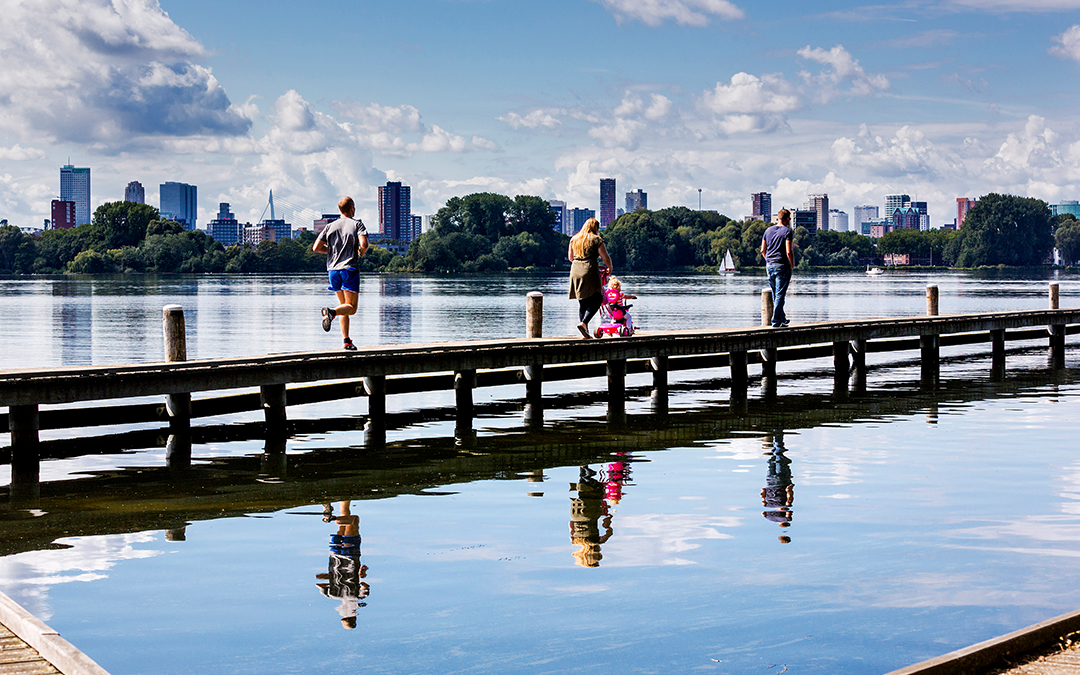The city is an urban landscape system. The challenge is to not only address environmental challenges within that system, but to also make and keep the city liveable. To achieve this, urban design should be synergetic, concludes Nico Tillie in his PhD thesis.

Within a city, various different substance flows can be identified. To ensure that a city becomes CO2 neutral, it is important to map all these flows, so they can be deployed in a smart way. In his thesis, ‘Synergetic Urban Landscape Planning in Rotterdam. Liveable Low-Carbon Cities', Tillie explored how these flows can be synergised. To do this, he mapped out the flows of water, energy, and nutrients in Rotterdam. The key possibilities and functions of the various actors were also charted, to make sure interventions in these substance flows not only leads to a CO2-neutral city, but above all to a city with a high quality of life. Tillie: “It’s all about moving with the flow, based on the quality improvement we want to achieve. People have jobs, have to do their shopping, and everyone sets their own priorities in doing so. This should be linked to low-carbon living. Every intervention in the city needs to result in fewer CO2 emissions and improved quality of life.”
In order to create more quality of life, it is important not to tackle themes in the city independently from each other. To achieve this, Tillie developed the method he refers to as SULP, ‘Synergetic Urban Landscape Planning’. This integrated strategy can be used to explore, devise, and plan potential synergies. It links CO2 and quality-of-life objectives with principles for sustainable urban development. The strategy has been extensively tested and fine-tuned in the Rotterdam city centre. This has resulted in the development of the ‘Smart City Planner’, a measurement tool linked to Geographic Information Systems (GIS). The Smart City Planner can be used to assess the sustainability score of a neighbourhood and also to plan synergies more effectively. This synergistic strategy can be used by all parties to get down to work. Putting all available knowledge on the table makes it easier for the parties to outline a new perspective together. A single action in the city can then lead to multiple results. This not only creates synergy between different flows, but also between different disciplines. “In that respect, Rotterdam is one big laboratory where it was possible to test the SULP strategy very effectively. It’s an open city, with many different and high-quality agencies, a lot of available data, and a city administration open to new ideas. Rotterdam is also a city on a scale that is workable: although it’s a large city, it’s not metropolis on its own. As a result, SULP can be easily upscaled to larger cities or downscaled to smaller towns and villages, to achieve effective adaptations on all scales,” explains Tillie.
The next step is to move beyond the substance flows and also incorporate biodiversity and urban ecology within the strategy. Tillie: “This is fairly uncharted territory, since very little is known yet about the interaction between nature and urban development. This is despite the fact that nature is essential for urban landscape systems. The question then arises: how can we clarify this in order to be able to generate a basic quality of and for nature in the sustainable city? It will involve forging a link between the different themes on a larger scale, enabling us to work together to make smarter cities where we can enjoy life more.”
